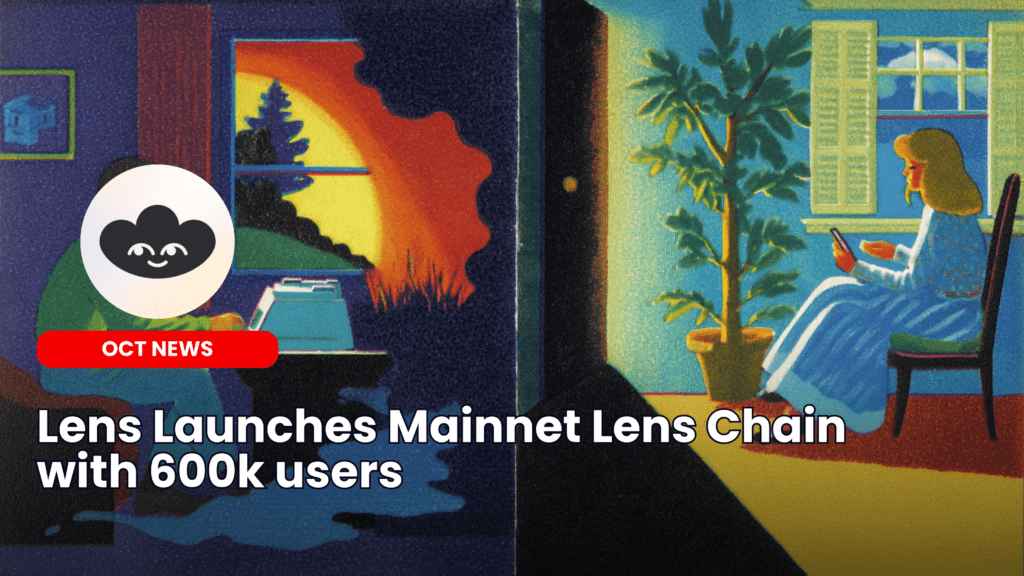
Lens has officially launched its Lens Chain mainnet on April 4, marking a significant milestone for the SocialFi ecosystem.
Author: Sahil Thakur
Published On: Sat, 05 Apr 2025 02:48:11 GMT
Lens has officially launched its Lens Chain mainnet on April 4, marking a significant milestone for the SocialFi ecosystem. The move from Polygon to its own Ethereum Layer 2 (L2) network is designed to enhance scalability and reduce costs, addressing the growing demands of onchain social interactions.
Lens Protocol originally launched on the Polygon sidechain in February 2022. However, as the platform expanded, it became clear that Polygon’s cost structure wasn’t scalable for mainstream social transactions. The migration to its own L2 chain, built within the zkSync Elastic Network, was driven primarily by the need for more efficient transactions.
Lens founder Stani Kulechov explained that the cost savings on rollups compared to Polygon can be up to 30 to 50 times lower, making it a practical choice for building social applications onchain.
To facilitate the migration, the Lens team transferred over 125 GB of data, including 12 million posts and 28 million social connections from more than 650,000 user profiles. This makes the migration one of the largest in the Web3 social space.

Lens Chain leverages the zkSync integration to achieve rollup scalability and low-cost transactions. It also utilizes Avail as its data availability (DA) layer, making Lens technically a validium rollup. This approach ensures that social data remains secure, scalable, and censorship-resistant while benefiting from Ethereum’s settlement security.
To make transactions stable and predictable, Lens Chain uses Aave’s GHO stablecoin as the gas fee. This decision aims to minimize volatility, offering users near-zero transaction costs.
Lens Chain also introduces Grove, a storage infrastructure that stores all social data fully onchain. Unlike other Web3 social platforms like Farcaster, where only user profiles are onchain, Grove ensures that all content is decentralized. This means users have full control over their data, which can be set as permanent or deletable, depending on preferences.
Grove also aims to deliver the speed and cost-efficiency comparable to leading Web2 solutions like AWS S3 and Cloudflare R2, while maintaining the core principles of decentralization.
Several popular decentralized social apps have already migrated to Lens Chain, including:
Lens’ strategy is to target SocialFi apps that blend social interaction with financial opportunities, similar to how YouTube unlocked a new class of creators. This builder-centric approach aims to attract Web2 developers to create decentralized applications on Lens Chain.
The launch of Lens Chain highlights a significant shift towards decentralizing social media. Unlike traditional platforms where content monetization is often controlled by centralized entities, Lens promotes permissionless infrastructure. This gives creators the freedom to monetize directly without intermediaries.
Lens’ modular approach means that developers can build diverse applications, from social networks to professional networking platforms, all while leveraging blockchain for data security and user ownership.
Today, Lens boasts 650,000 user profiles and 28 million social connections. Although still far from rivaling mainstream social media giants, the platform’s growth demonstrates increasing interest in blockchain-based social networks.
The Lens team believes that as more developers and users adopt SocialFi solutions, decentralized social networks will become viable alternatives to traditional platforms.
With Lens Chain now live, users can explore a decentralized social media ecosystem where data ownership and monetization are in their hands. If you are a developer, the modular architecture and low transaction fees could offer a unique opportunity to build innovative SocialFi applications.
For users, the migration to Lens Chain means faster transactions, lower costs, and more control over social interactions. As the ecosystem grows, Lens could become a hub for decentralized social engagement.
Disclaimer: This is not financial advice (NFA). Always do your own research before engaging with blockchain projects.
The Lens community and partners seemed very happy with the mainnet launch, as they should be. Just goes to show how much is Lens appreciated in the same. One user apparently crashed the app’s frontend but Lens was quick to respond to that too.

Real voices. Real reactions.
Our Crypto Talk is committed to unbiased, transparent, and true reporting to the best of our knowledge. This news article aims to provide accurate information in a timely manner. However, we advise the readers to verify facts independently and consult a professional before making any decisions based on the content since our sources could be wrong too. Check our Terms and conditions for more info.

